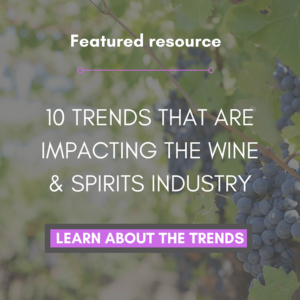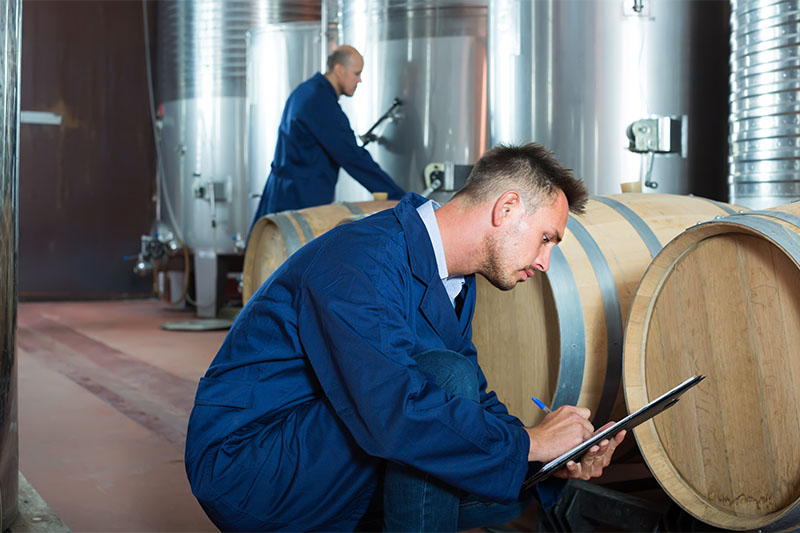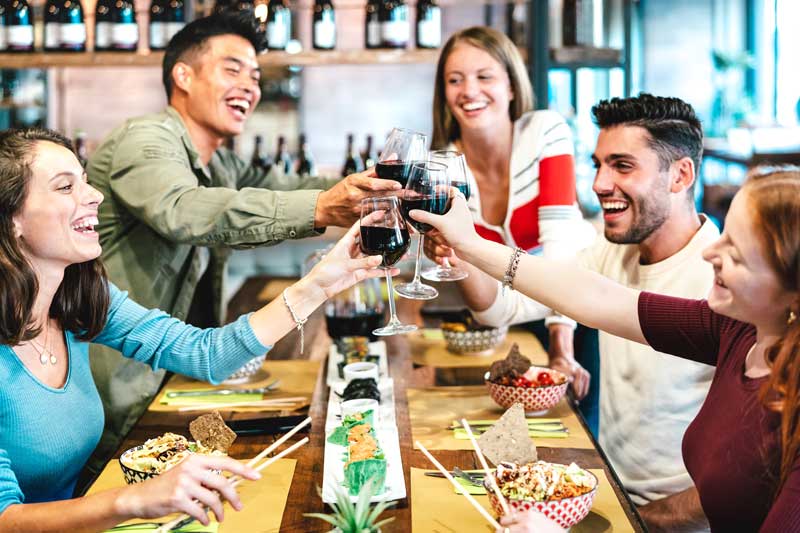If you go to Napa Valley’s Vineyard 29 and walk around the crops, the grapes almost look like they’re in bandages. But the bandage is actually a water-measuring device that sends the results to a computer. The data helps take the guesswork out of assessing whether the grapes are healthy. It makes the wine better and helps produce stronger vintages.
Winemakers are collecting as much data as they can to help create better production. The processes include drones flying in the sky to measure reflectance rates and software to measure the control tanks connected to those water-measuring bandages.
No man’s land
Inside the Palmaz winery, which reportedly cost $20 million to build, work is happening, but no one is there.
The winery designed its own software program and app to alert workers about what’s happening, even when they’re not on site. Sometimes the software can even tend to the grapes without the workers’ direction. For example, if a batch of fermenting grapes gets too hot, the software automatically kicks in to cool down the stainless steel barrel.
How the data can be used
Depending on a vineyard’s size and willingness to invest in technology, there are endless opportunities to take advantage of data.
Starting with the growing of the grapes, winemakers can measure the water each grape is getting. There are also weather stations that can gather data to help predict the best time to harvest the crops. Drones can help evenly apply any pest control.
There are even smart irrigation systems that help manage and control water usage. This can be considered precision agriculture, which helps minimize environmental impacts on the grapes.
Once the grapes are picked, the software can control the temperature within the barrels or the room the barrels are in.
Data lovers and data haters
There are skeptics who think all this data and high-priced software is unnecessary.
 “People have been making wine for thousands of years, and good wine for, probably, several centuries,” Carole Meredith, who produces Syrahs for the Lagier Meredith label, told Food and Wine. “It is simply not necessary to use some of this high-tech knowledge.”
“People have been making wine for thousands of years, and good wine for, probably, several centuries,” Carole Meredith, who produces Syrahs for the Lagier Meredith label, told Food and Wine. “It is simply not necessary to use some of this high-tech knowledge.”
But large players in the industry are attracted to the data despite their deep, rich roots in winemaking. E. & J. Gallo Winery, the largest global exporter of California wine, created its own data applications to help minimize grapes going to waste and improve the overall grape quality being used in their wines.
“What we focused on over the last three years was to create a mobile scheduling application that could be used in the fields,” E. & J. Gallo Winery CIO Sanjay Shringarpure told CIO. “Imagine a grower rep going to a vineyard, tasting the grapes, and then right there on an iPad, scheduling that from a supply chain perspective, as well as gathering field collection data on the characteristics of that grape, in a digital ecosystem that you’ve created in an iPad or an iPhone.”
How wineries can use data for better wine
Data can be used in the growing, producing, and selling phase of winemaking.
Some wineries such as Palmaz and Gallo created their own systems, but there are plenty of pre-existing products on the market that vineyards can buy. These programs can range from $1,000 a year to a few hundred thousand dollars, depending on the level of detail wineries want.
While the software technology is an investment upfront, it can help the wineries profit by helping save crops and aiding in creating a better product.
- 87% of Utilities Have Experienced at Least One Data Breach in Last Three Years - February 5, 2024
- Can Drones Lower Your Next Utility Bill? - January 10, 2024
- Onshore Wind Farms Are The Next Big Thing In Renewable Energy - December 6, 2023




